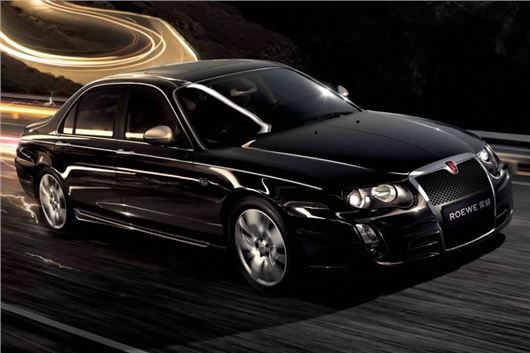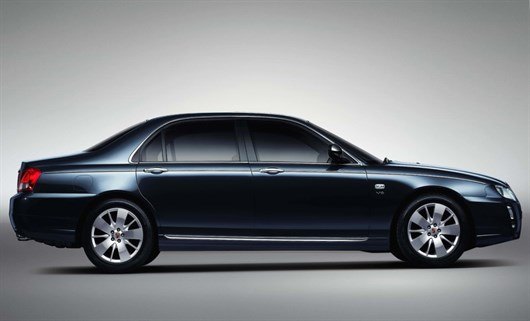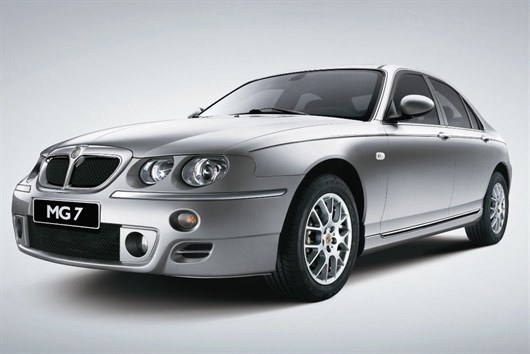End of an era: Rover 75-based Roewe says goodbye

Almost exactly 18 years after the Rover 75 first wowed the crowds at the British International Motor Show, the very last Chinese-built version has finally bid adieu – bringing to an end a fascinating story of hope, failure and resurrection.
Unveiled in October 1998, the 75 was BMW-owned Rover’s crucial new addition to the executive saloon market, replacing both the 600 and 800 ranges. But when BMW boss Bernd Pischetsrieder used the Rover 75’s launch to focus on Rover Group’s mounting losses, the entire future of the company was suddenly in doubt.
BMW pulled the plug in 2000, licensing the Rover marque (and selling MG) to the Phoenix Consortium, which relaunched the company as MG Rover. An estate model – the 75 Tourer – soon followed, but the cleverest development of all was the creation of a whole new range of Rover-based MGs. And in the case of the 75, this resulted in the MG ZT saloon and ZT-T estate.
MG Rover knew that in order to survive it had to collaborate, and talks with several companies took place. A failed deal with China Brilliance saw MG Rover turning to Shanghai Automotive Industry Corporation (SAIC), with the two companies announcing in 2004 that there was to be a joint venture. This would result in SAIC owning 70% of MG Rover and the two companies producing a million cars a year in the UK and China.

The Intellectual Property Rights for the Rover 25, 75 and K-series engine were sold to SAIC in late 2004, only for the Chinese firm to walk away from the planned joint venture in March of the following year. A few weeks later – in April 2005 – MG Rover went into administration, which officially marked the end of the road for the Rover 75.
Resurrection
There was, however, a second coming. SAIC continued with its plans to productionise the Rover 75 in China, working alongside UK-based development consultants Ricardo. But with the assets of MG Rover – including the MG brand itself – being sold by administrators to rival Chinese car maker Nanjing Automobile Corporation (NAC), the latter company had the potential to build its own 75-based MG on production lines shipped over from Longbridge.
More frustration for SAIC came when BMW sold the Rover trademark to Ford (the then owner of Land Rover), effectively outlawing its use on any Chinese-built 75. The solution was to create a new car brand, with Roewe finally being decided upon. But when SAIC subsequently acquired arch rival NAC in a deal brokered by the Chinese government, the Roewe and MG marques found themselves under the same corporate umbrella.
The Roewe version of the 75 (badged as the 750) was launched in China in 2006, with the MG derivative (the MG7) appearing the following year. The Roewe featured an extended wheelbase and revised styling, with the 75’s sloping rear end being replaced by a squared-off look. The MG7, meanwhile, was available in either standard- or long-wheelbase guises. Engine choices across both ranges were based around the ex-Rover K-series and KV6 designs.

The MG7 remained in production through to 2013, but the Roewe 750 proved to be more long-lived – with the final car rolling off the line in October 2016, almost exactly 18 years after the Rover 75 was first unveiled. It may have endured a turbulent career, but the 75 and its various derivatives managed to defy all expectations when it came to longevity.
WHAT DO YOU THINK? Are you sad to see the last Rover 75-based vehicle cease production in China – or was its demise overdue? Whatever your views, tell us below.
Compare classic car insurance quotes and buy online. A friendly service offering access to a range of policies and benefits.


 Paul Guinness
Paul Guinness
 NEC classic motor show 2020 postponed due to Covid 19 concerns
NEC classic motor show 2020 postponed due to Covid 19 concerns
 Classic car auction house Coys goes into administration
Classic car auction house Coys goes into administration
 Motor racing great Sir Stirling Moss dies aged 90
Motor racing great Sir Stirling Moss dies aged 90
 Alfa Romeo anniversary races set for Silverstone
Alfa Romeo anniversary races set for Silverstone
 Government to make E5 fuel available for classic owners
Government to make E5 fuel available for classic owners
 Plans to introduce cleaner fuel could damage more than a million classic cars
Plans to introduce cleaner fuel could damage more than a million classic cars
 Top 10: Classic cars from the Gulf motor racing heritage collection
Top 10: Classic cars from the Gulf motor racing heritage collection


